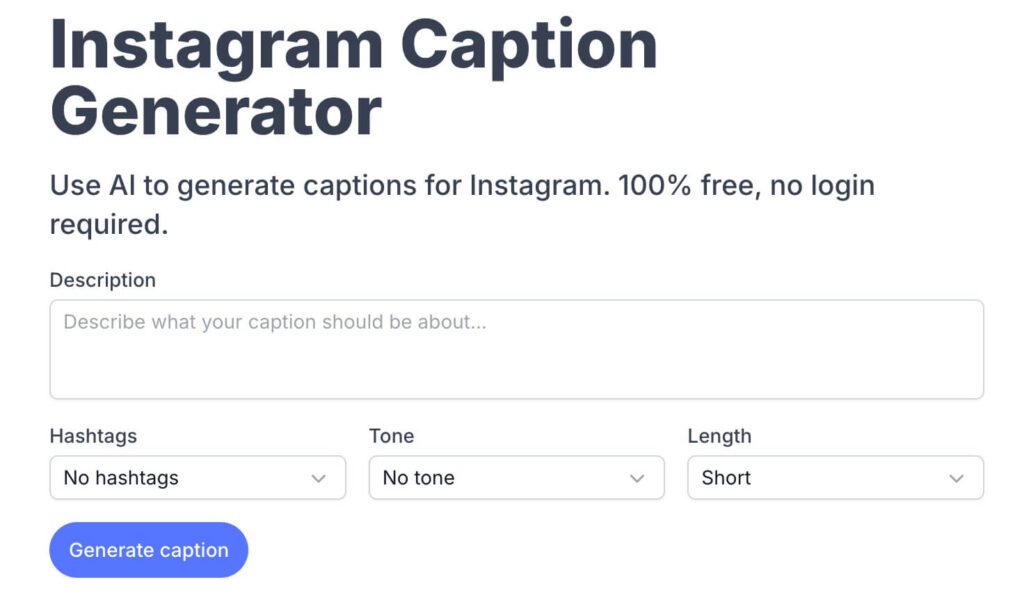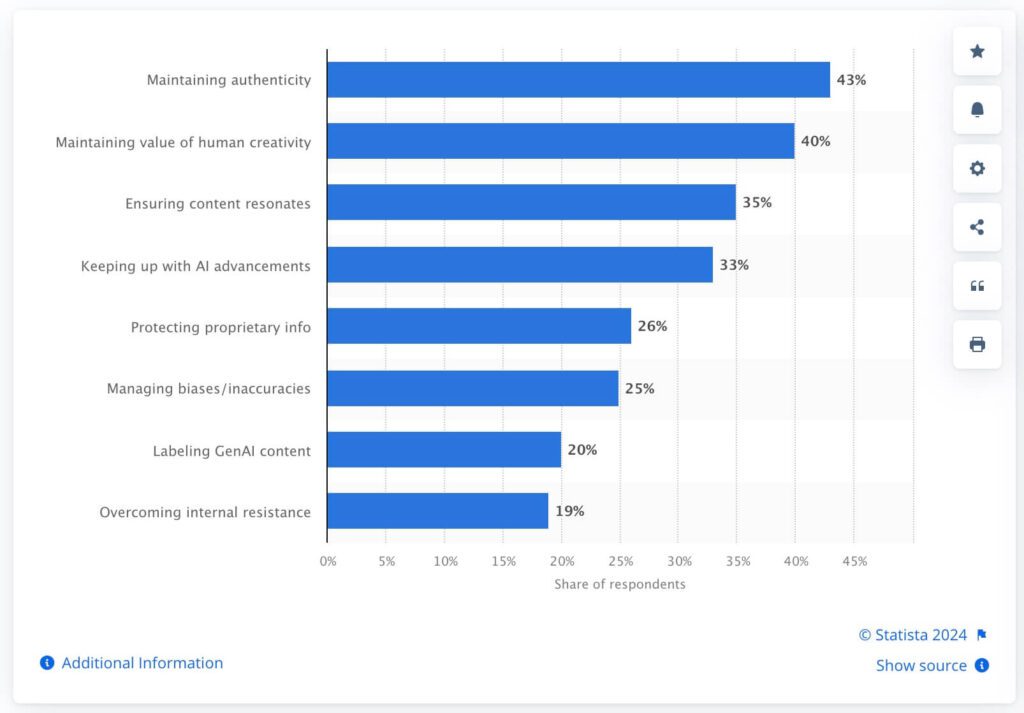Top Ways to Leverage AI for Social Media Marketing
A few years ago, artificial intelligence (AI) was considered a futuristic concept. Something straight out of a science fiction movie. Fast forward to today, and it has become a crucial tool across industries. Among its many applications, AI for social media marketing stands out.
AI has proved itself to be a powerful technology in helping brands market themselves and connect better with their audience. So much so that businesses and individuals failing to embrace AI risk being seen as outdated in an ever-evolving digital world.

In this blog, we aim to focus particularly on the use of AI for social media marketing. The many applications, benefits, and tools to get the job done. So, if you are curious about exploring the merits of AI for social media marketing, then get ready for a crash course on leveraging AI for social media.
- Practical Ways to Leverage AI for Social Media Marketing
- Step 1: Setting the Stage
- Step 2: Strategizing Your Social Media Content
- Step 3: Creating Captivating Social Media Content
- Step 4: Getting Your Content Out There
- Step 5: Analyze Your Social Media Performance
- AI for Social Media – The Challenges
- Personalize Your Social Media Designs With KIMP
Practical Ways to Leverage AI for Social Media Marketing
From laying the groundwork to, strategizing the content, creating the content, scheduling it and analyzing the performance, there are various essential steps in any social media marketing strategy. Let’s talk about the various processes in these stages where AI can be a valuable add-on.
Step 1: Setting the Stage
Understanding your audience
Irrespective of the channel in focus, the foundational step in any marketing strategy is to understand who you are talking to. Audience analysis helps you identify the most suitable platforms for your social media marketing strategy and helps tailor your message as well.
For example, Yeti is a brand built for outdoor enthusiasts. Their post here resonates with people who share the same love for the outdoors. Their understanding of their audience helps them curate impactful visuals that position their products without appearing promotional.
So yes, audience analysis is crucial in social media marketing and yet it is no easy feat.
Hence this is one of the first places where you can leverage the benefits of AI for social media. One of the biggest strengths of AI is its ability to handle huge volumes of data and identify patterns or consolidate relevant details. You can use this to create detailed profiles of your target audience, including their demographics, interests, online behavior, and sentiment toward your brand.
Moreover, AI tools can also segment your audience into distinct groups, helping you personalize your social media content more effectively.
So, what are some tools you can use to enhance audience analysis?
- Qualifyed – it helps you create predictive audiences which can be much more productive than simply relying on lookalike audience groups suggested by most social media platforms.
- SparkToro – helps you perform better audience research.
- User Persona – to generate customer personas to better understand the nuances of your target audience.
Know your competitors
Competitor tracking comes in handy when identifying content types and post formats that work in your niche. Additionally, this can be a great way to identify any gaps and improve your social media content analysis.
However, monitoring post engagements, audience interactions and differentiating factors that work for your competitors can be tedious. Hence AI can help tackle this.
AI for social media competitor analysis helps capture real-time insights about who engages with your competitors and what kinds of posts they engage the most with.
Here are a few AI tools that can be used for social media competitor analysis:
- Phlanx – for platform-wise engagement rate analysis.
- Competitors.app – to monitor your competitor’s new posts and other activities on various platforms.
- Socialinsider – to obtain detailed analyses of competitor pages on social media.
Identify trends on time
Going viral and keeping up with trends are some of the most important things that brands aim for on social media. However, according to about 49% of marketers, identifying relevant social media trends on time is one of the biggest challenges in social media marketing.
AI for social media can be a game-changer in automating this process. With the right AI tools brands can automate marketing monitoring activities. Some of them can instantly notify you about emerging trends and provide detailed analytics to help you understand whether this will be a trend to focus on or just another fad.
With data gathered through these AI tools, brands can stay ahead of the game and immediately embrace trends thus boosting their reach and popularity on social media.
For instance, Jaguar’s recent rebranding was one of the hottest topics of discussion on social media. The tech brand Nothing made the most of the opportunity (by aligning with Jaguar’s rebranding tagline “Copy Nothing”) and quickly responded with the following post and some witty tweaks to their social media page as well. The post quickly gained popularity with about 3.5 million views and solid engagement within a short period.
im just a chill admin pic.twitter.com/c9MqF3RlkD
— Nothing (@nothing) November 21, 2024
Timely responses like this one can be simpler when you deploy AI for social media trend monitoring.
So, what are some tools that you can use to stay up-to-date with social media trends?
- Trend Watchers – quickly identify niche-specific trends.
- Feedly – to get real-time updates about trends.
- Tapilo – particularly useful for monitoring trends on LinkedIn.
Step 2: Strategizing Your Social Media Content
Content ideation
Once you know who your target audience is and what kinds of content they enjoy, brainstorming the most effective ideas is the next big step. Because depending on your posting frequency and your goals for social media, you need fresh ideas that keep up your brand’s visibility and engagement. If you think this process is time-consuming and tough to tackle, AI to the rescue.
Did you know that about 45% of marketers rely on AI tools these days to come up with content ideas? Consequently, this is one application of AI you cannot ignore! AI tools are useful for generating post ideas and identifying relevant formats.
What are some of the AI tools that you can use in social media content ideation?
- Google’s Gemini – to quickly generate ideas and export them to your mail or as a document.
- ChatGPT – the most convenient tool to generate social media content ideas.
- MyMap.ai – for instant visual brainstorming.
For example, we asked ChatGPT to come up with a week’s worth of content ideas for the Instagram page of a marketing agency. We also mentioned the required tone and other details to fine-tune the results and here’s a sample of ChatGPT’s response.

Similarly, you can use AI tools when working on your social media content calendar to save time and effort. But when you do, here are a few things to remember when drafting your prompt:
- Define the objective of your post.
- Include details about your target audience.
- If you do not already have the memory function turned on, clearly describe your brand and your brand’s personality.
- Mention the tone required.
- State the details required – if you need a brief or if you need a copy or even references to images, mention them.
Step 3: Creating Captivating Social Media Content
To create visuals
Visuals are mandatory elements for social media success. These can be in the form of single-image posts, carousels, GIFs, short videos, or even long videos. But yes, creating visuals can be time-consuming and resource-intensive.
AI image generation is booming with plenty of creative tools to explore. In addition to generating images, AI tools can also be used to edit and enhance your designs before posting them on social media. Or they can be used to remove backgrounds as well.
For example, the below image gives a glimpse of some of the background manipulation features available on a popular AI background removal tool, Remove.bg.
A word of caution: authenticity is of prime importance especially to set your brand apart in the crowded social media space. Most AI-generated designs when used as they are can look unauthentic and not very relevant to your brand. Therefore, it’s a good idea to work with professional designers to customize these designs and to add your brand’s signature visual flavor. This gives your brand a distinct identity on social media and makes you appear more authentic and relatable.
That said, you can definitely use AI tools to create reference images for your posts or even to create visual elements to use in your social media designs. Here are other options to consider when deploying AI for social media content creation.
- Canva’s AI-powered features can help create designs and templates for social media.
- Adobe’s Firefly tools are some of the best in the industry.
- Remove.bg for background removal.
- Pixelcut for image upscaling and background removal.
- Unlimited design services that incorporate AI tools to enhance their design workflows.
To generate copy
Copy generation for social media includes generating captions as well as working on the script for videos and copy for image and carousel posts. Even the best-looking visuals will not deliver your message effectively if your copy does not align with these designs. And you also need good captions to boost engagement and to enhance the clarity of your post.
Generating on-brand captions and copy can be a tedious process. But with AI this step can become so much simpler. Most AI tools like ChatGPT and Gemini can help you generate post captions instantly.
Here are a few more tools that can help generate captions and copy for social media:
- Socialbu – to instantly create captions along with relevant hashtags.
- ContentStudio – lets you customize the tone, length, and other details in your caption.
- Pallyy – for Instagram post caption generation.
- SocialBee – to generate post copy for diverse social media platforms.
- Anyword – comes with convenient pre-built templates for various platforms.
- Predis.ai – to generate copy for social media posts and ads.
For influencer marketing
According to about 70% of marketers, influencer marketing is one of the most impactful ways to raise brand awareness through social media. That’s not all. Influencer collaborations can also help expand your reach, venture into new markets, and humanize your brand.
However, finding the right influencers is not always easy and that’s where AI can be your secret ingredient. From analyzing your profile to automatically recommending the right influencers for your niche, AI-powered influencer platforms can transform the way brands tackle influencer marketing.
Here are a few tools that use AI for social media influencer marketing:
- InsightIQ – to find influencers for diverse campaign needs.
- Upfluence – finding and contacting influencers as well as managing and scaling your campaigns.
- Modash – keep track of influencer campaigns and get thorough analytics.
Step 4: Getting Your Content Out There
Schedule and publish your social media content
Consistent posting schedules are key to social media marketing success. Most brands struggle with posting content on time since this can be a lot of work. Particularly when it involves posting when your audience is most active. Therefore you need a well-planned content posting schedule to ensure that your well-crafted content does not get lost in the social media chatter.
Hence one of the most popular applications of AI for social media marketing is content scheduling. Some AI tools come up with optimal posting schedules and others can be used to maintain an organized calendar with the content posting process fully automated.
Moreover, these AI tools can also help you schedule and publish content across multiple social platforms in one unified dashboard, saving time and reducing errors.
Here are a few tools that use AI for social media content scheduling.
- Circleboom – to schedule posts for a wide range of social media platforms.
- Agorapulse – for seamless content scheduling and tracking along with easy team collaboration options.
- Buffer – to schedule as well as analyze your social media content performance.
While these AI tools can ensure that your posts go live on selected dates and at selected times, you need to focus on real-time interactions to ensure optimal engagement. Periodic adjustments might also be required even with the best tools. So do not set a schedule and forget about it.
Step 5: Analyze Your Social Media Performance
Monitor engagement and other metrics
After planning and executing your social media strategy, there’s one crucial step that makes or breaks your brand’s growth on social media – continuous monitoring.
You need to consistently keep track of your social media pages and the performance and engagement on your posts. This continuous monitoring helps you understand whether your current strategy helps you meet your objectives. Additionally, social media analytics can also help you understand the ROI of your marketing efforts and thus plan your content for the coming months more effectively.
So, where does AI fit into this process? Social media analytics and reporting can take up a lot of time. Imagine doing this for all the platforms where your brand is active! Considering how challenging this can be, AI for social media analytics can be a worthy investment.
This helps you get a better visualization of your current content performance and also helps you identify and fill gaps to maximize your impact.
Here are a few social media analytics tools you can use:
- Mandala AI – identify optimal posting schedules and track brand mentions.
- Locobuzz – understand customer sentiments to enhance your social media content strategy.
- Hootsuite – to track engagement and understand optimal posting times.
- Brandwatch – compare real-time analytics to historical data and also compare against benchmarks to gain more insights.
AI for Social Media – The Challenges
Having discussed these ideas, we would also like to highlight the fact that integrating AI into the workflow is not always easy. In fact, the infographic here shows the biggest challenges that brands reportedly face when adopting AI.
Let’s review these challenges and some tips to tackle them when you start leveraging AI for social media:
- Most AI tools cannot maintain the brand’s unique voice and authenticity. Hence ensure that you blend AI-driven outputs with human storytelling to preserve your brand’s authenticity.
- Remember that there’s no replacement for human creativity. Therefore, use AI tools merely to augment the talent in your team and preserve the human touch in your social media content.
- Test AI-generated content on smaller groups before large-scale deployment. This lets you incorporate audience feedback to refine outputs and ensure relatability.
- Keeping up with the AI news can be challenging. So, follow brands and creators who are actively involved in AI research or even subscribe to AI-focused newsletters and YouTube channels for quick updates.
- To avoid vulnerabilities, choose AI platforms with strong data privacy and security measures.
- To eliminate biases and stereotypical content on social media, use AI tools that are transparent about their processes and training data. And fact-check and peer-review your social media content involving diverse teams.
- Be transparent by labeling AI-generated content. This builds trust with your audience while showcasing innovation.
- Educate your internal teams for a smooth transition and to ensure optimal use of the selected AI tools for social media.
Personalize Your Social Media Designs With KIMP
With AI to help automate all the tedious processes in social media, all that’s left is to set up a workflow for unique on-brand designs and design customization. This is where an unlimited design service with a dedicated design team, like KIMP, can save you time. With unlimited designs and revisions, you can easily A/B test your social media strategies and designs to identify the most impactful ones for your page.
So what are you waiting for? Register now and start your 7-day free trial!



